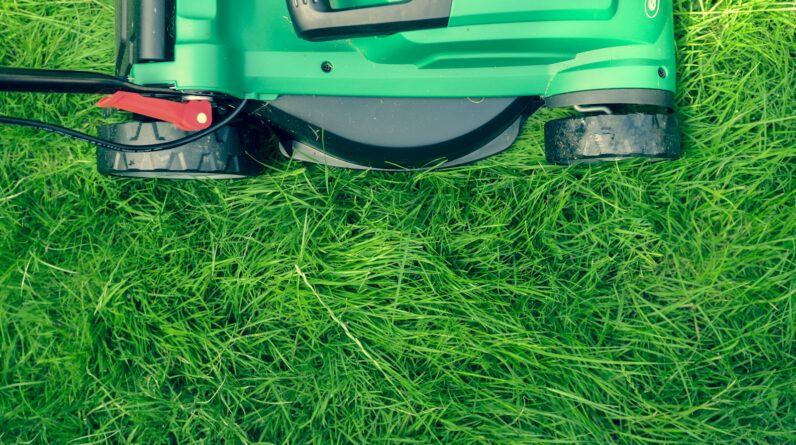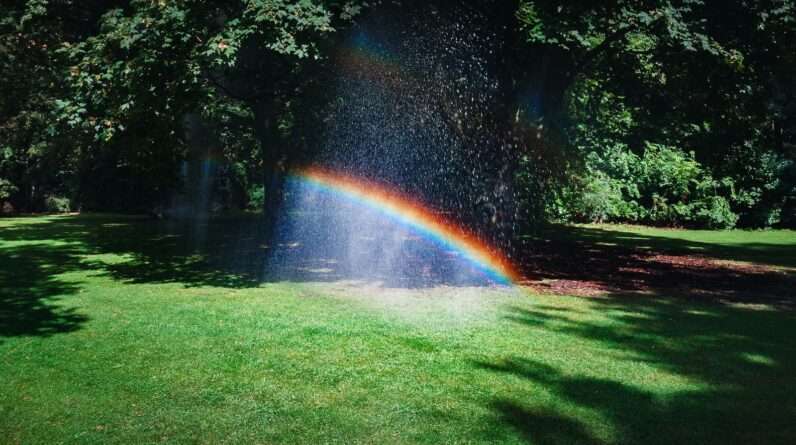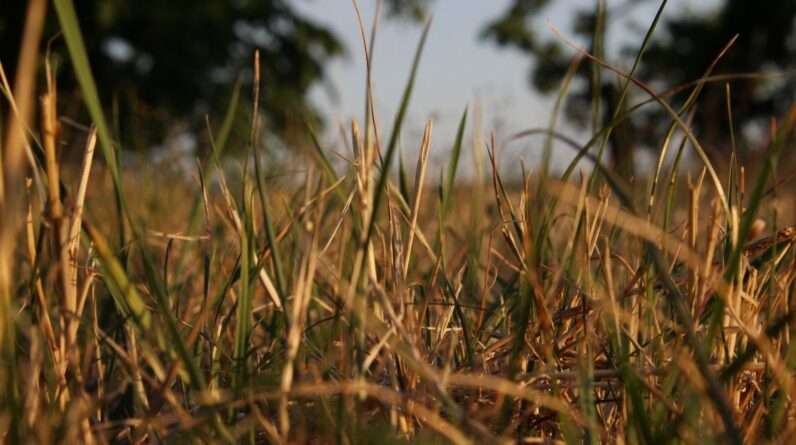
Now is the time to start considering what you need to do for your spring lawn care activities. Taking care of your lawn is like creating a beautiful masterpiece in your own backyard. From preparing the soil to maintaining your tools, every step is important in making your outdoor space a stunning oasis. With a little bit of know-how and a lot of love, you can turn your lawn into a lush paradise that everyone will admire. Let’s explore the essential steps together and unlock the secrets to a thriving lawn that will leave you feeling accomplished and proud.
Key Takeaways
- Rake and dethatch to prepare the lawn for spring growth.
- Adjust soil pH and quality to foster healthy grass development.
- Implement weed control measures for a pristine lawn appearance.
- Use slow-release fertilizer and consistent watering for lush, resilient grass.
Lawn Preparation
For a flourishing lawn this spring, your first step in lawn preparation should involve raking to remove debris and dead grass, setting the stage for optimal seed germination and growth. By clearing the lawn of these obstacles, you create a prime environment for new grass to take root and thrive. As you rake, pay attention to any areas where the grass may be sparse or nonexistent. Overseed these patches with the appropriate grass seed to ensure a uniform and lush lawn.
In addition to raking, consider aerating the soil to enhance air, water, and nutrient circulation, vital for the health of your grass roots. Proper aeration promotes a robust root system, which is essential for a vibrant lawn. Furthermore, dethatching plays a crucial role in preventing thatch buildup, maintaining turf health, and fostering a luxurious lawn appearance. Take care to address these aspects of lawn preparation to set the foundation for a healthy and weed-free yard this spring.
Soil Health Management
Enhancing the vitality of your lawn begins with optimizing soil health management techniques to ensure a thriving grass ecosystem. Maintaining the ideal soil pH level is crucial for promoting optimal grass growth. You can easily adjust pH levels by using a soil test kit, which is an affordable tool that costs around $10. By keeping the soil conditions neutral, you create a favorable environment for your grass to flourish.
To combat soil compaction and encourage healthy root growth, utilizing aeration tools is essential. These tools help in improving soil quality by allowing better air circulation and water absorption, promoting robust root development. Regular aeration not only prevents soil compaction but also creates space for the roots to expand, leading to a healthier and more resilient lawn.
| Soil Health Management | Facts | Benefits |
|---|---|---|
| Soil pH Level | Adjust with test kit | Optimal grass growth |
| Aeration Tools | Combat soil compaction | Healthy root growth |
| Root Growth | Promote expansion | Robust and resilient lawn |
Aeration and Root Care
Unlock the potential of your lawn’s health and vitality by prioritizing aeration and root care as essential steps in your spring lawn maintenance routine. Aeration tools, such as core aerators, play a crucial role in combating compaction and promoting healthy root growth by removing soil plugs. This process allows for better air, nutrient, and moisture penetration in the soil, creating optimal conditions for strong roots to develop. Regular aeration not only improves soil quality but also reduces thatch buildup and provides space for roots to expand freely.
Weed Control Strategies
As you nurture your lawn’s health through aeration and root care, your next crucial step lies in implementing effective weed control strategies to maintain a lush and vibrant yard. Utilizing pre-emergent herbicides is a proactive approach to prevent weed growth by forming a barrier that inhibits weed seeds from sprouting. Post-emergent herbicides, on the other hand, target existing weeds, aiding in their elimination and halting further spread. It’s important to recognize that different weeds may necessitate specific herbicide treatments for optimal control and eradication.
Regular spot-spraying of weeds after mowing can aid in keeping your lawn free of invaders without the need to overspray the entire area. Understanding the timing and application methods of herbicides is crucial for successful weed management in your lawn. By incorporating a well-rounded weed control plan that includes both pre and post-emergent herbicides, alongside strategic spot-spraying, you can ensure a weed-free lawn that complements the overall health and beauty of your yard.
Grass Seeding
For a flourishing lawn that exudes vibrancy and health, incorporating strategic grass seeding practices is paramount. When it comes to grass seeding, attention to detail can make all the difference in achieving a lush and uniform lawn. Here are five key tips to help you master the art of grass seeding:
- Utilize slow-release nitrogen fertilizer: Supporting the growth of new grass with the right nutrients is essential for healthy development.
- Maintain consistent watering: Ensuring that newly seeded areas are adequately hydrated promotes germination and establishment.
- Stay on top of weeding: Removing weeds promptly allows grass seedlings to thrive without competition for resources.
- Consider overseeding: Introducing new grass seed varieties can enhance the resilience and overall health of your lawn.
- Monitor progress: Regularly inspect seeded areas to track growth and address any issues promptly.
Maintenance Tips
Enhance the health and beauty of your lawn by implementing these expert maintenance tips for a vibrant and lush yard year-round. Regular mowing is key to prevent weed growth and maintain a healthier lawn. Make sure to mow at the appropriate height to encourage optimal growth. Additionally, proper edging using a half-moon edger creates clean bed boundaries, enhancing your lawn’s overall aesthetic appeal.
To address bare spots and promote a denser turf, consider overseeding with quality grass seed products. This will help fill in any patchy areas and thicken the lawn. Don’t forget to water newly seeded areas daily to support germination and growth.
When it comes to fertilizer, choose a high-quality product that suits your lawn’s specific needs. Fertilizing at the right times and with the right nutrients can significantly boost your lawn’s health and appearance. By following these maintenance tips diligently, you can ensure your lawn remains healthy and vibrant throughout the seasons.
Dethatching Importance
Remove the dead grass and debris from your lawn through dethatching to pave the way for new seed germination and promote healthy growth. Dethatching is a crucial step in maintaining a vibrant lawn as it eliminates the thatch layer, allowing essential nutrients and moisture to reach the soil and roots effectively. Here are some key points to consider:
- Dethatching facilitates the penetration of water, air, and nutrients into the soil, promoting overall soil health.
- Excessive thatch can create a barrier that hinders new seed growth and root development.
- Failure to dethatch may lead to pest problems and diseases due to the lack of proper airflow and moisture regulation.
- Spring serves as an optimal time for dethatching to prepare the lawn for the growing season ahead.
- Regular dethatching not only enhances the appearance of your lawn but also supports soil and root health, reducing the risk of pest infestations and promoting a lush, green landscape.
Proper Soil Testing
After ensuring your lawn is free of thatch and debris, the next crucial step is to conduct proper soil testing to understand the specific needs of your grass and soil composition for optimal growth. Soil testing provides essential insights into your soil’s pH levels, nutrient content, and composition, crucial for nurturing healthy grass growth. By utilizing affordable soil test kits, priced around $10, you can gather vital information to adjust your soil conditions effectively. Maintaining a neutral pH level is key for most grass varieties to flourish and absorb nutrients efficiently, ensuring a vibrant lawn. Identifying any deficiencies or imbalances through soil testing is instrumental in addressing potential hurdles to optimal grass growth and overall lawn health. By interpreting soil test results, you can make informed decisions on soil amendments, like lime applications, to create a conducive environment for a lush, green lawn.
| Soil Parameter | Importance | Action Needed |
|---|---|---|
| pH Levels | Vital for Grass Thriving | Adjust if Imbalanced |
| Nutrient Content | Essential for Growth | Supplement if Lacking |
| Soil Composition | Influences Grass Health | Amend if Necessary |
| Grass Growth | Dependent on Soil Quality | Enhance Conditions |
Yard Cleanup Essentials
Springing into action, ensure your yard cleanup essentials are in place to pave the way for a vibrant and thriving lawn this spring season. As you prepare your yard for the upcoming season, here are some crucial tasks to prioritize:
- Clearing Debris: Start by removing any winter debris like fallen branches, leaves, and clutter to create a clean canvas for your lawn.
- Raking Dead Grass: Thoroughly rake out dead grass and lawn clippings to prevent them from inhibiting the growth of new seeds during spring.
- Pruning Damaged Branches: Trim back any damaged branches to not only enhance the aesthetics of your yard but also stimulate healthier plant growth.
- Removing Debris: Clearing out any remaining debris ensures a fresh start for your lawn care activities like overseeding and fertilization.
- Organizing the Space: A well-organized and clutter-free yard promotes new grass growth and sets the stage for effective lawn maintenance throughout the season.
Equipment Care and Maintenance
Ensuring your outdoor tools are properly inspected and maintained is essential for efficient and effective spring lawn care. Regular inspection of your lawn mower can help identify issues before the season starts. Servicing tools is crucial, including tasks like changing oil, spark plugs, and air filters. Fuel readiness is also essential for efficient lawn care during the spring season. Proper maintenance contributes to the longevity and effectiveness of your equipment, ultimately saving you time and preventing potential breakdowns. Taking care of your equipment before starting spring lawn care activities is a proactive approach that will benefit you in the long run.
| Equipment Maintenance Tips | Description | Importance |
|---|---|---|
| Regular Inspection | Check for wear and tear, leaks, and loose parts. | Identifying issues early. |
| Servicing Tools | Change oil, spark plugs, air filters as needed. | Ensuring optimal performance. |
| Mower Blade Care | Sharpen or replace dull blades. | Promoting a clean cut for healthier grass. |
Frequently Asked Questions
What Is the First Thing You Put on Your Lawn in the Spring?
You typically start your spring lawn care with a spring fertilizer. Applying water before the fertilizer helps prevent root burning and ensures effective nutrient absorption. Choose the right type based on grass, climate, and growth needs to avoid over-fertilization.
How Do I Treat My Lawn in Early Spring?
In early spring, treat your lawn by dethatching, testing the soil, cleaning up the yard, aerating, treating weeds, seeding, and maintaining equipment. Prioritize these steps for a healthy lawn, preventing issues and ensuring lushness.
How Do I Restart My Lawn in the Spring?
To restart your lawn in the spring, focus on dethatching, soil testing, yard cleanup, aeration, weed treatment, seeding, and equipment care. By following these steps, you can ensure a healthy and vibrant lawn for the upcoming season.
Should You Fertilize or Mow First in Spring?
Fertilize first to provide essential nutrients for grass growth before mowing in spring. Mowing after fertilization prevents nutrient loss and ensures even distribution. Applying fertilizer before mowing allows nutrients to penetrate the soil and benefit grass roots.












